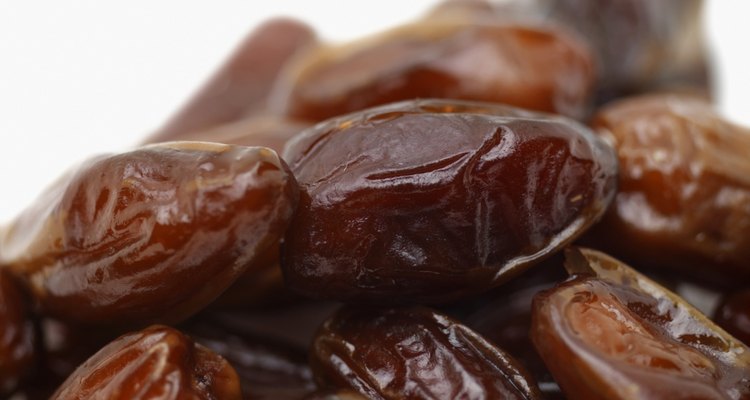
The date palm originated in the Middle East and has been cultivated since about 4,000 B.C, according to Purdue University. An ancient symbol of romance and fertility, dates were prized for their sweet, moist and chewy texture. They are particularly high in phosphorous, natural sugars and, when dried, tryptophan. Countless uses for dates have developed over the centuries. Drying and pulverizing dates, which creates date sugar, helps dates stay fresh for a very long time.
Date Sugar
Fans of date sugar point out that it is more "food" than sugar, an all-natural tan-colored sweetener made from dehydrated, pulverized dates and still high in fiber, vitamins and minerals. The main ingredients in date sugars are sugars -- fructose, glucose and sucrose -- and complex carbohydrates. Commercial date sugar comes in both medium or fine grinds and works best in cooking or baking recipes where it won’t make much difference that it doesn’t dissolve in liquid the way sugar does. Date sugar made from unsulfured, organically grown dates is generally available.
Homemade Date Sugar
Date sugar, especially organic types, can be prohibitively expensive. One way to be able to use date sugar regularly is to make your own. Buy inexpensive fresh or dried dates in bulk -- they don’t need to be the richest, sweetest, moist varieties -- and then pit and slice them. If you have a dehydrator, spread dates out on the trays and dry them at about 105 degrees Fahrenheit for two days. Otherwise, spread them out on screen trays and dry them in the sun, covered with netting to deter flies and other insects, or spread them out on cookie sheets and dehydrate them in a very low-temperature oven. When date slices are fully dry, pulverize them in a food processor.
In Baked Goods
Date sugar can be substituted measure for measure for brown sugar and also granulated white sugar, if you like very sweet cakes, quick breads and cookies. Some cooks prefer using only 2/3 cup of date sugar per cup of white sugar. It is particularly good in nut or fruit breads and muffins where other ingredients also remain intact, but wonderful in cookie bars, fruit crisps and crumbles and as crumb toppings for pies. Try sprinkling it on top of fresh cinnamon rolls before baking. Because date sugar burns easily, it’s not usually a good choice for cookies that spread out flat during baking.
In Batter
Unlike true sugars, date sugar does not dissolve when stirred into water or liquids. To dissolve date sugar somewhat before using it in batters, Fran Costigan of NaturoDoc.com suggests adding boiling water to dissolve date sugar at least somewhat. This makes sense if water is part of the recipe anyway. Otherwise, just be aware that date sugar may show up as distinct, sweet flecks in cake, pancake or waffle batters.
Effective Storage
Date sugar is naturally "hygroscopic," meaning that it readily absorbs and retains moisture, which tends to make it clump together. Whether you make your own or buy date sugar, store it in an airtight jar or other container. If you keep date sugar in a restaurant-type shaker for easy cooking or table use, you may want to try the old-school technique of placing a saltine cracker or two in the container to absorb any moisture.
Related Articles
How Do You Store Fresh Dates?

Why Are Date Fruits a Superfood?

The Sugar in Mangoes
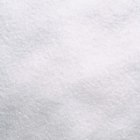
The Disadvantages of Saccharin
Can You Freeze Granulated Sugar?
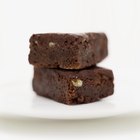
Can You Make Brownies Without ...
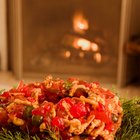
What Prevents Mold in Fruit Cakes?
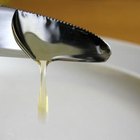
Does Corn Syrup go Bad?

Ramadan Recipes for Kids

How to Date Vintage Nike Shoes by the ...

How to Dry Jujube Fruit

How to Greet a First Date
How to Soften Crystalized Molasses

How to Dry Sliced Oranges in the Oven

How to Change the Date on a Timex Watch

Main Ingredients of English Muffins

How to Ask My Husband on a Date
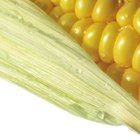
How to Substitute Light Corn Syrup in a ...
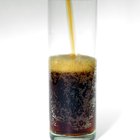
Is There Glucose in Soda?

Substitute for Superfine Sugar in ...
References
Photo Credits
George Doyle/Stockbyte/Getty Images